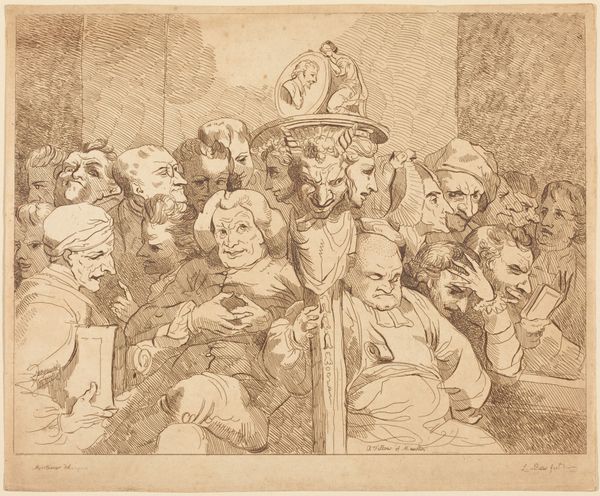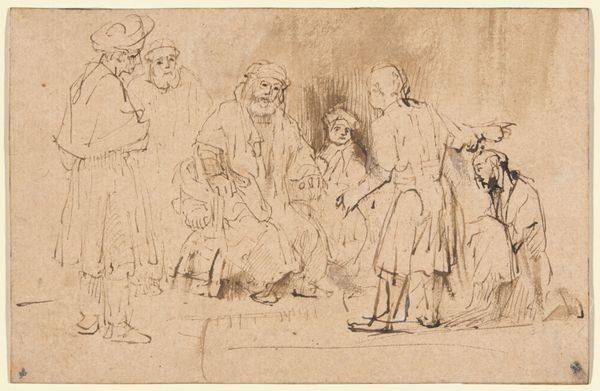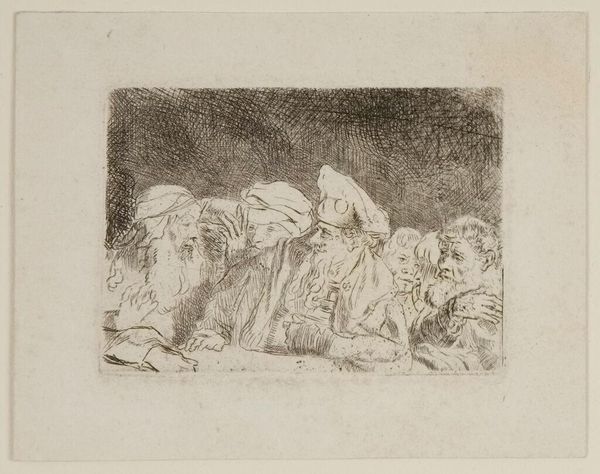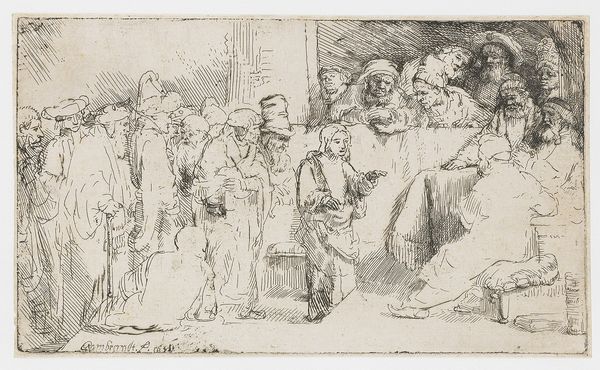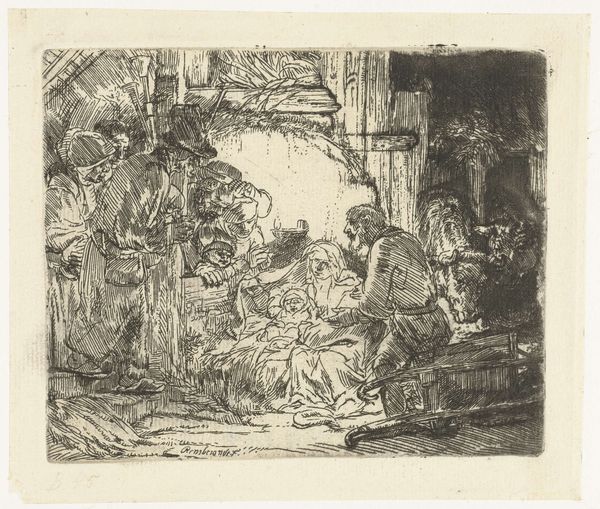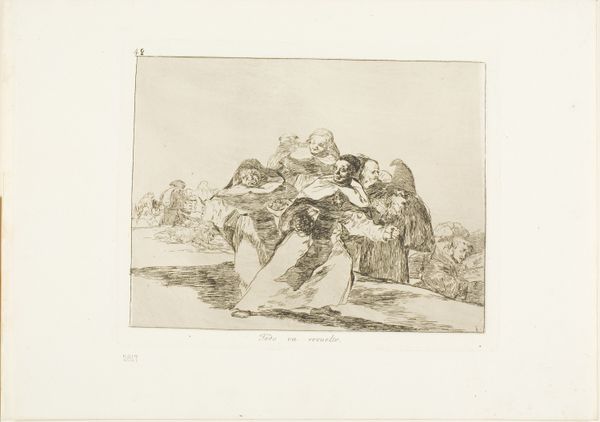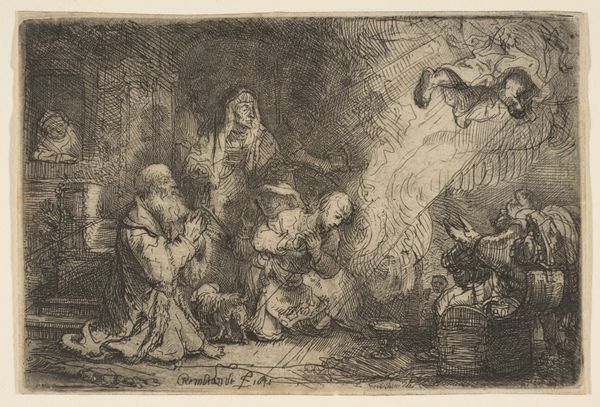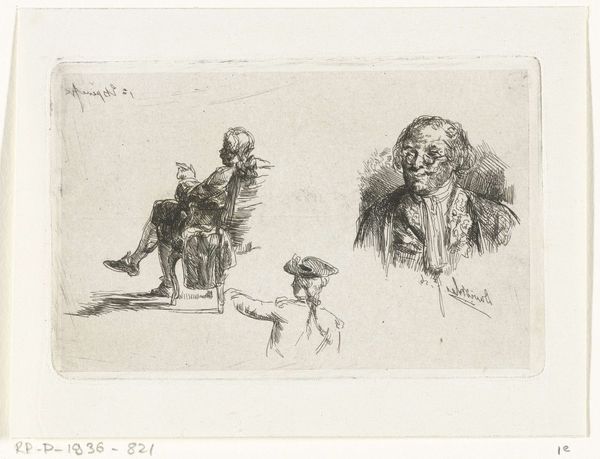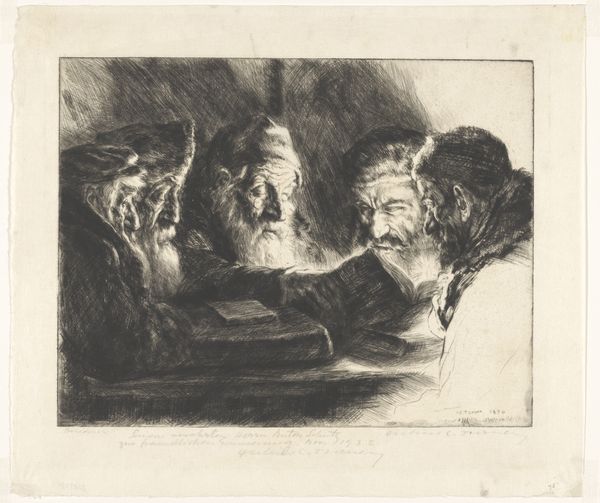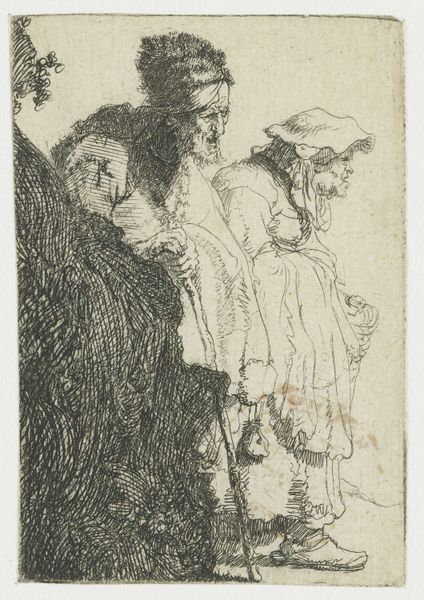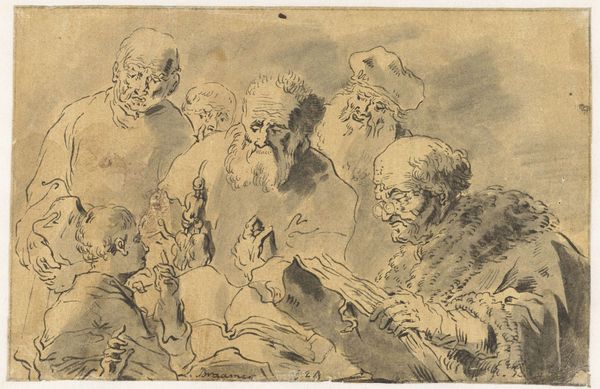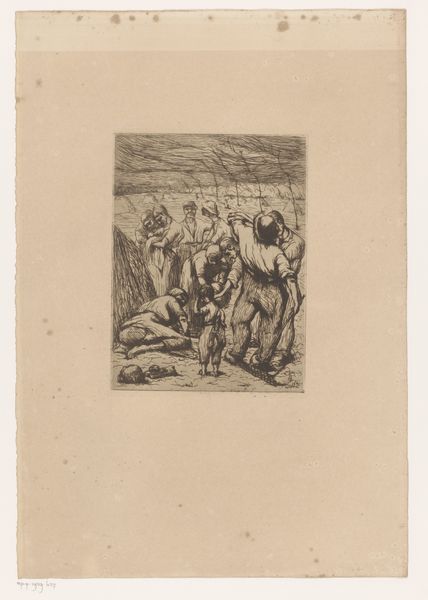
The Hundred Guilder Print: the figures leaning on the wall in the centre left 1753 - 1810
0:00
0:00
Dimensions: height 54 mm, width 75 mm
Copyright: Rijks Museum: Open Domain
Rembrandt van Rijn made this etching using a copper plate, a burin, and acid. It’s called “The Hundred Guilder Print” because that was supposedly the high price it fetched in its day. To make a print like this, you would first cover a copper plate with a waxy, acid-resistant ground. Then, you would draw into that ground with a needle, exposing the metal in a fine line. Next, the plate goes into an acid bath, which bites away the exposed areas. You can deepen the lines, or add more, by repeating the process as often as you like. Look closely at the image. See how some areas are darker, denser than others? Rembrandt achieved that effect through his control of the etching process, and by using the burin to rework some areas of the plate. The result is a study in the distribution of light and shadow, all achieved through the skillful manipulation of materials and the labor-intensive application of technique. It’s a good reminder that even prints, which we tend to think of as endlessly reproducible, are grounded in material process.
Comments
No comments
Be the first to comment and join the conversation on the ultimate creative platform.

